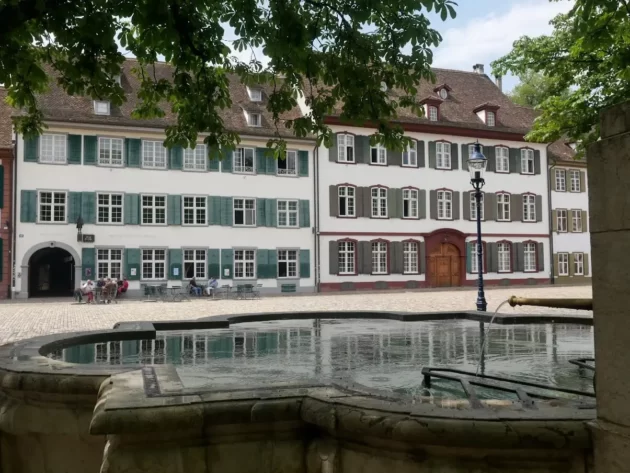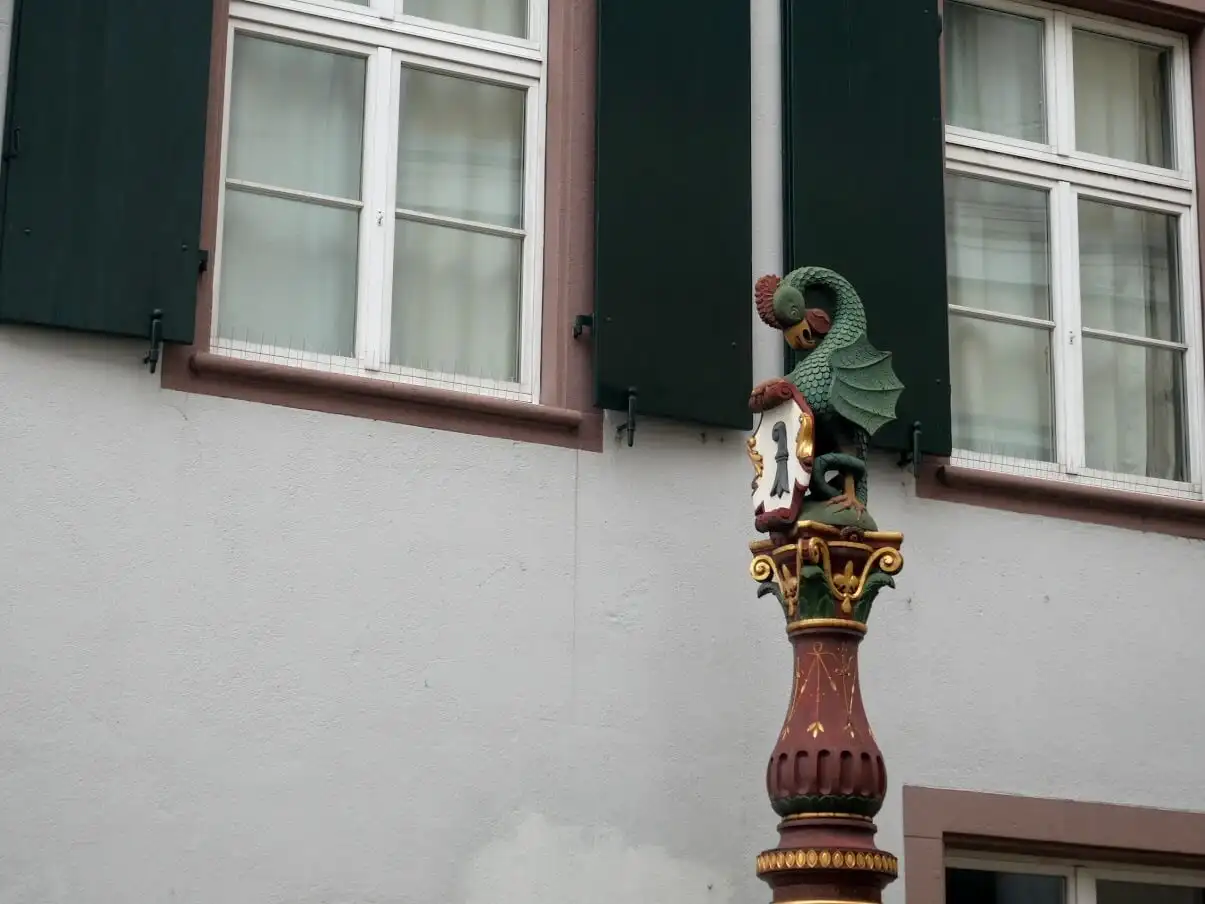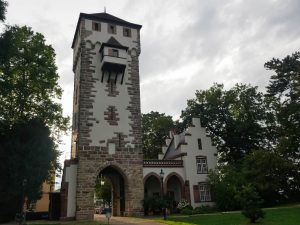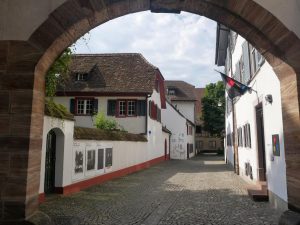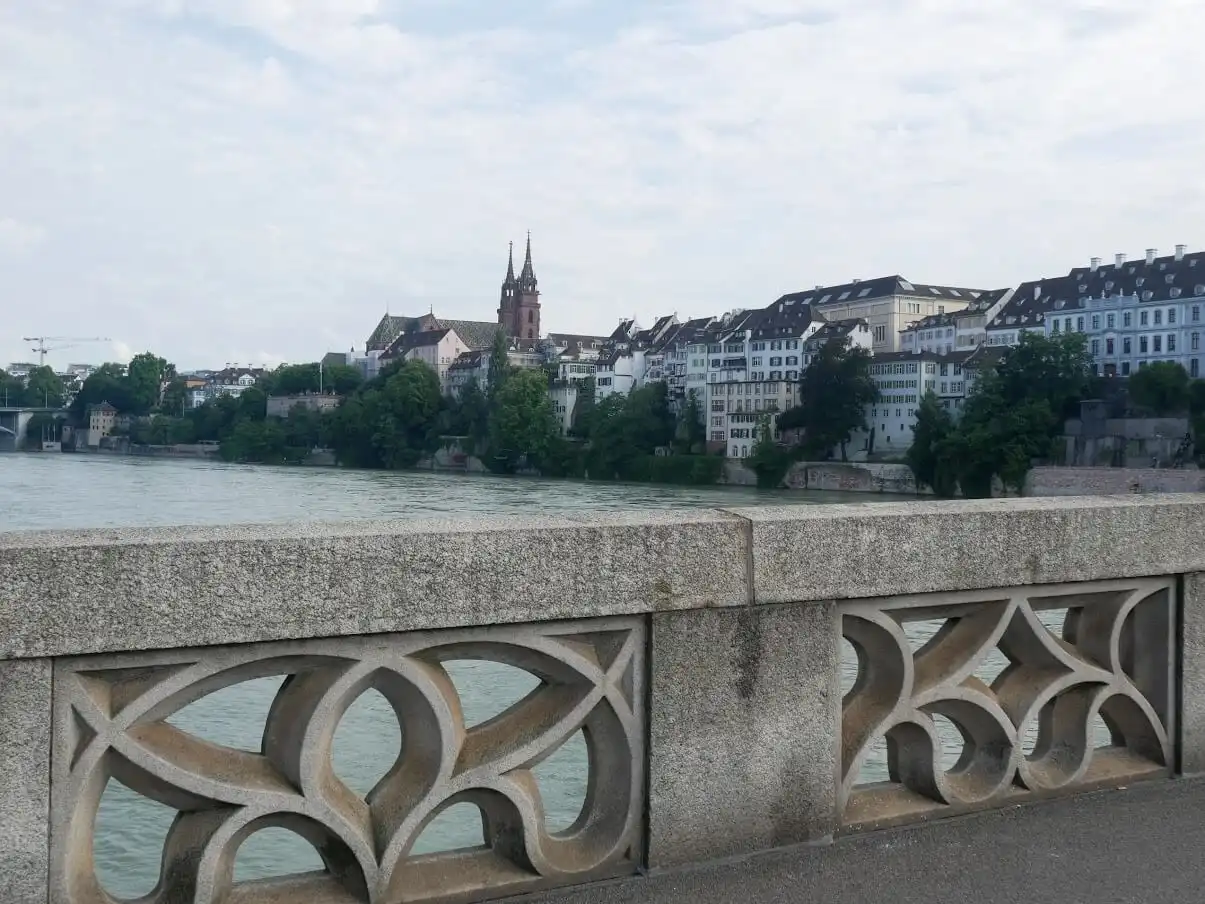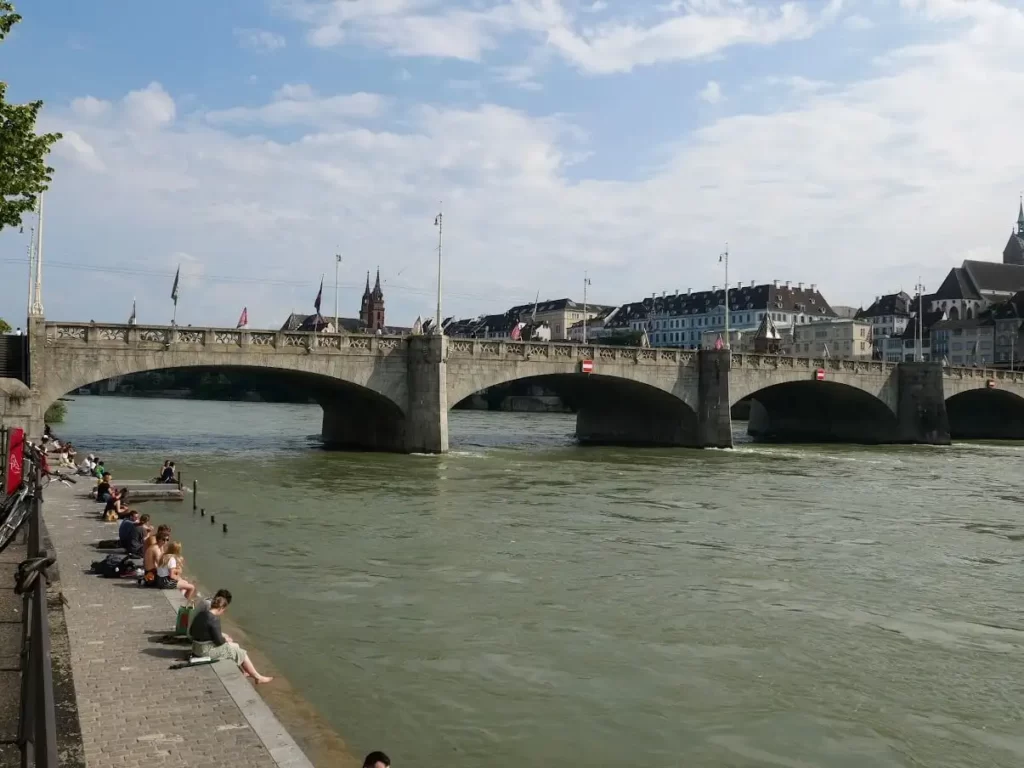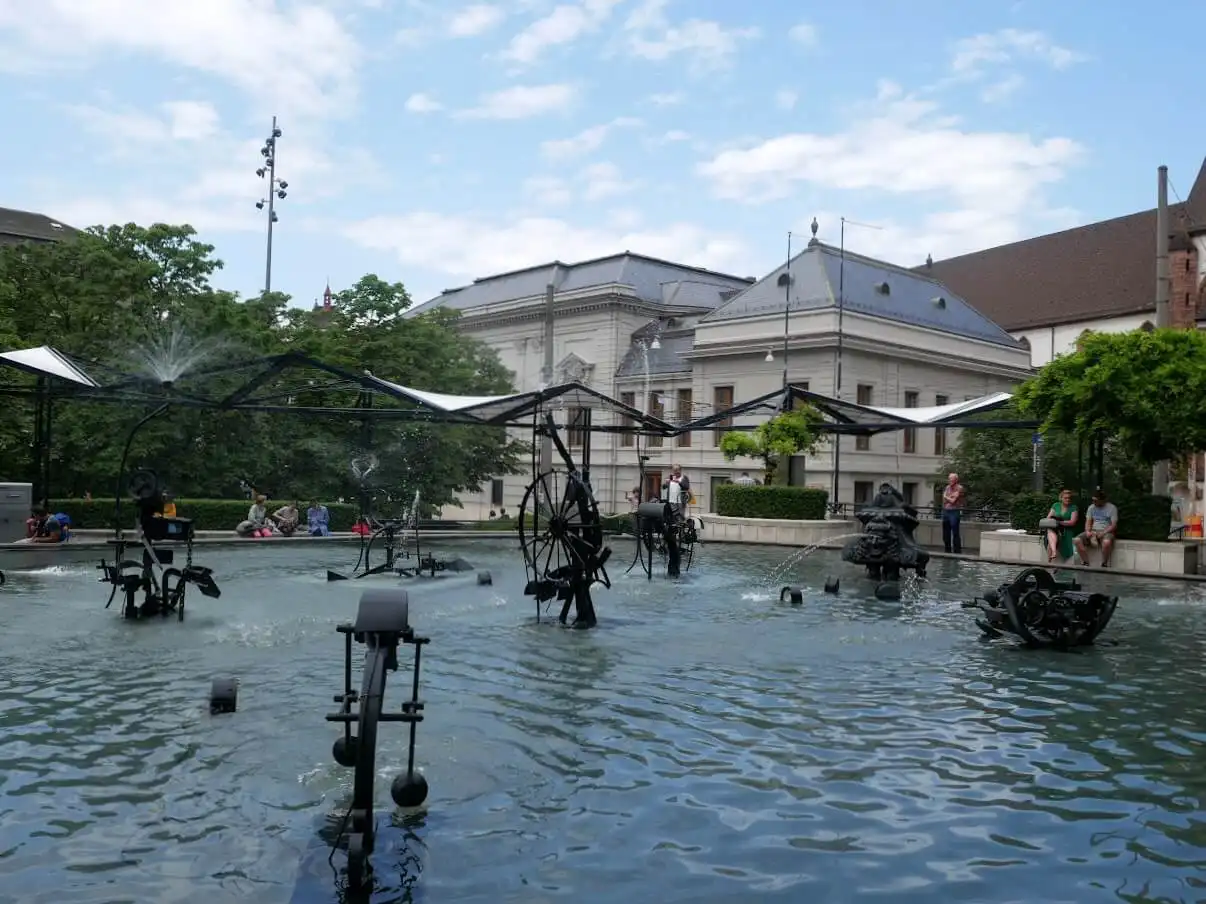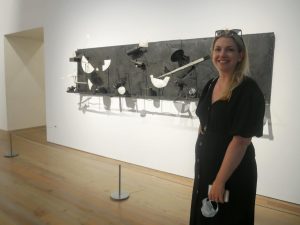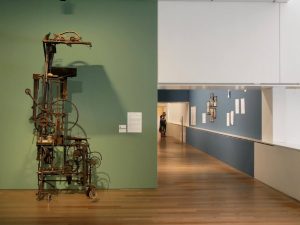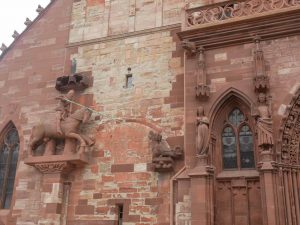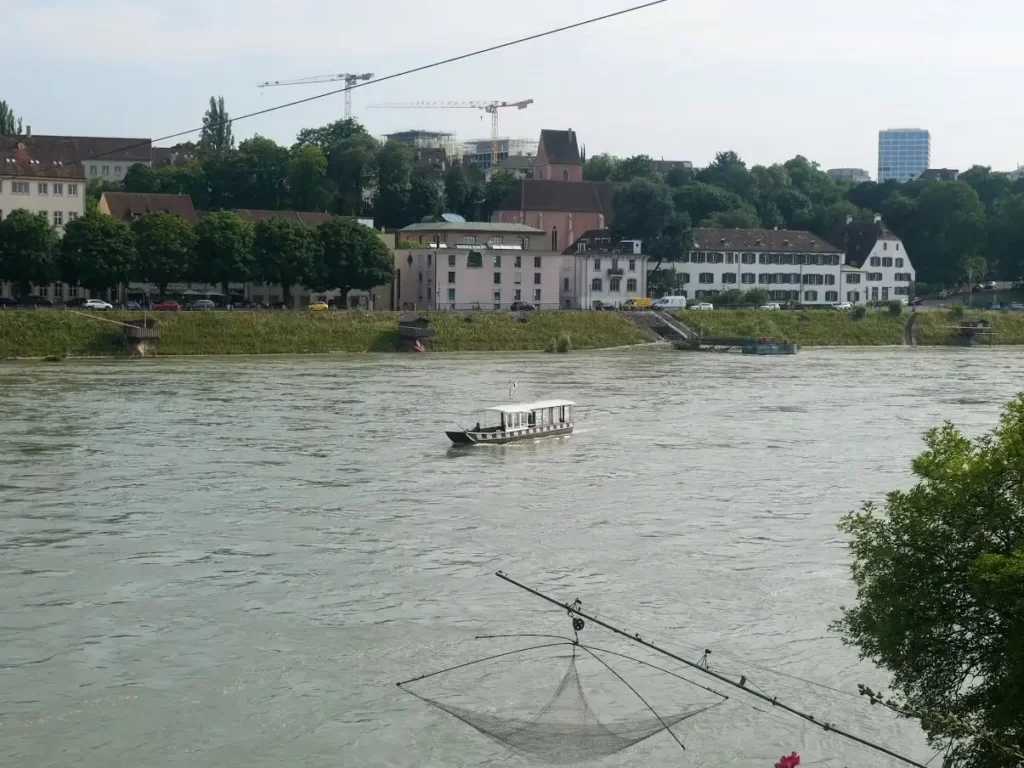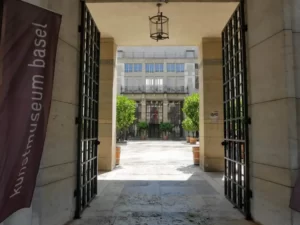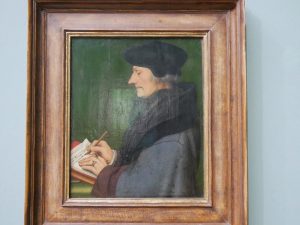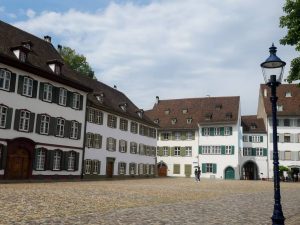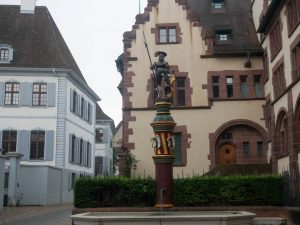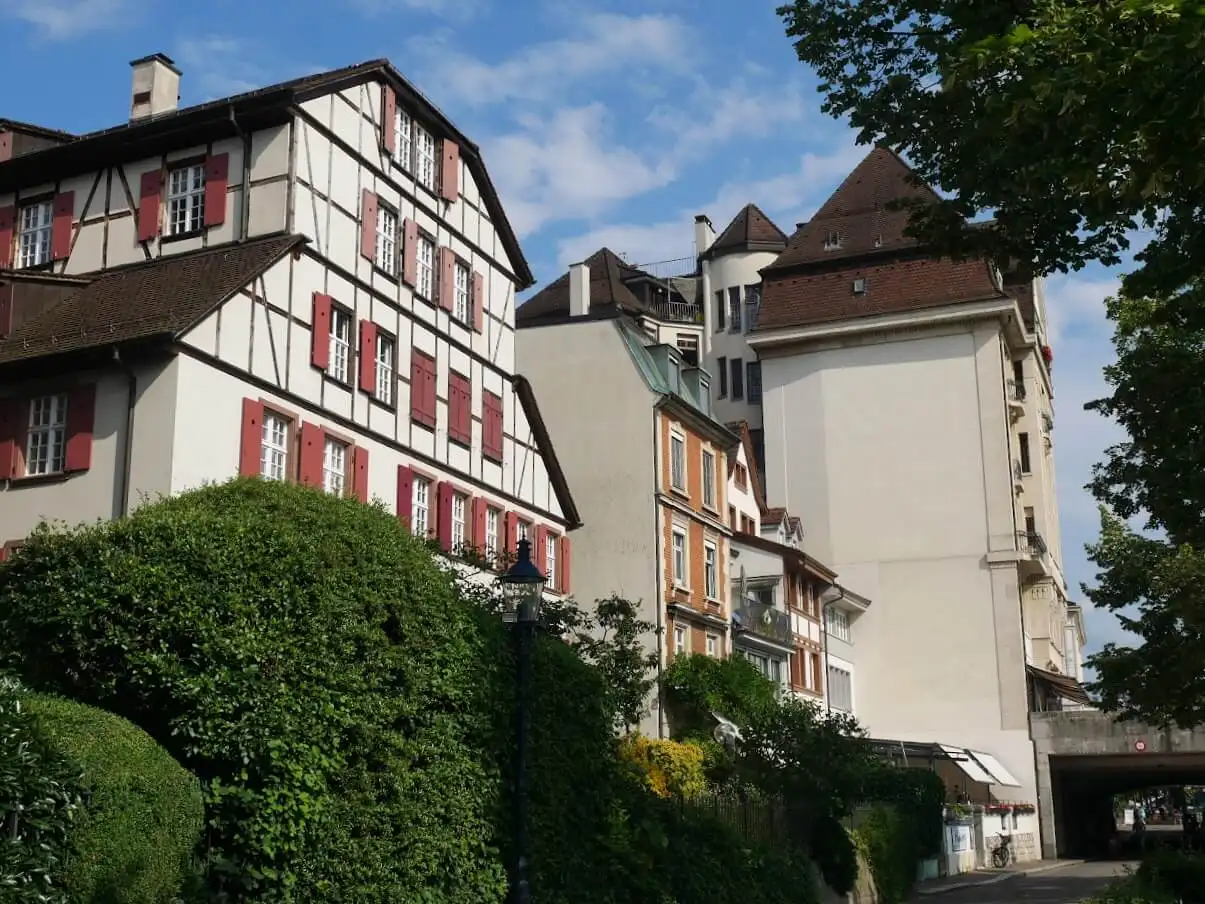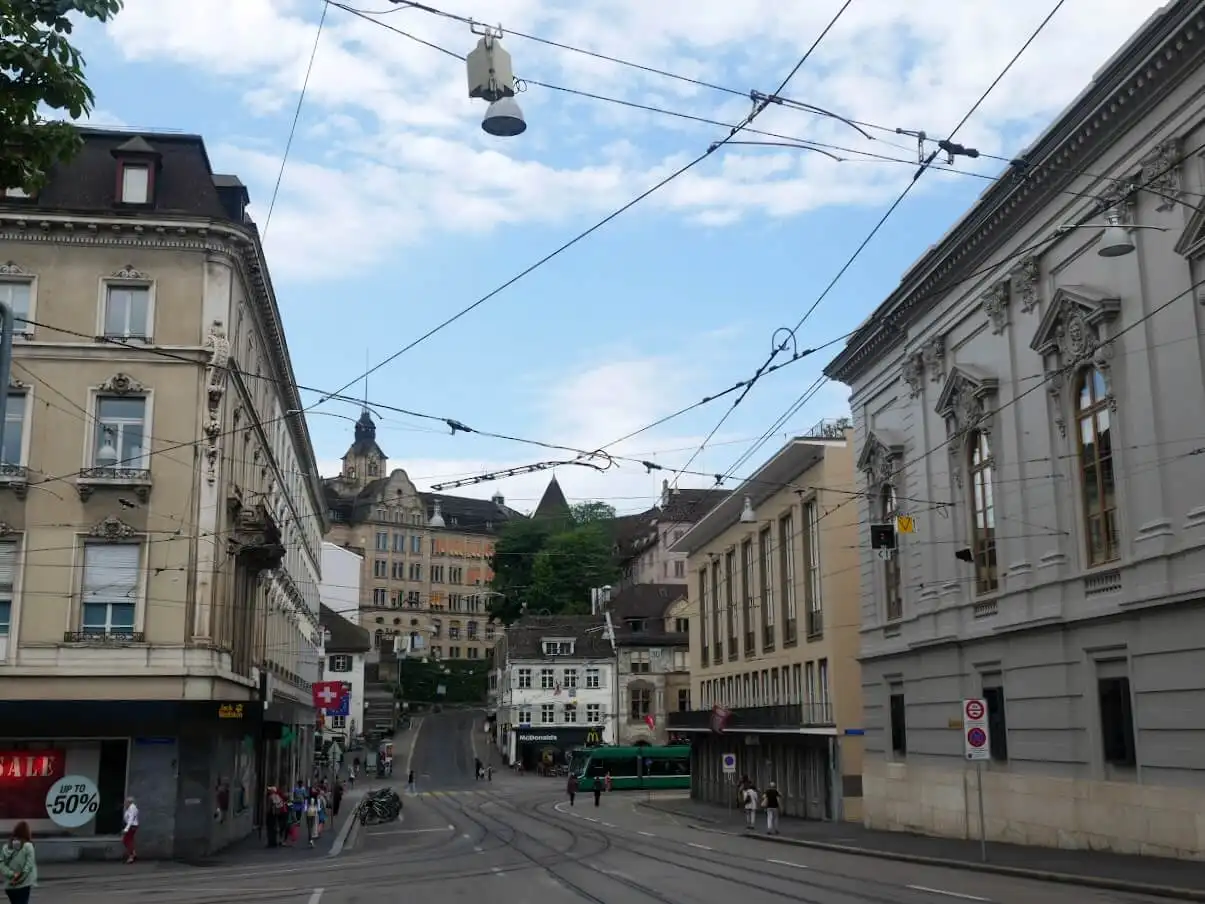Creating the Basel Travel Guide is a great challenge. How to present the city with more than two thousand years long history in the same number of words? How to give an overview of museums and art institutions in the Cultural Capital of Switzerland when there is a museum per square kilometre in Basel?
If I needed to describe the Swiss city of Basel in three words, they would be humanist, relaxed and eclectic. That’s Basel. The city has a long history, massive affection for arts and culture, but it’s also a modern architecture and business hub. Probably that great mix of old and new in its appearance, and north and south in its attitude gives the city a great relaxed and laid back vibe.
Basel Travel Guide
Being known as the Cultural Capital of Switzerland, Basel is a beautiful place to visit for anyone interested in art and culture. Wandering around its streets provides a beautiful trip back to history. It’s a walk among the Celtic walls, Roman heritage and some lovely medieval buildings. During a walk around Basel, you’ll stumble on several cultural institutions hosting some world-known art.
However, Basel didn’t get stuck in its history. The city is young and alive. Not only with its fantastic modern buildings that were designed by some of the most famous contemporary international architects. But also by its residents living a Mediterranean lifestyle north of the Alps.
Short Basel History
Basel is an old town with more than two thousand years long history. It was first inhabited by Celts. During the archaeological excavations done a few decades ago, the researchers have found an old Celtic wall. It can still be seen close to the Basel Cathedral today.
When Romans came to that area, they built their military camp on the hill where the Basel Cathedral is located. They established a larger town called Augusta Raurica in its vicinity. By the 7th century, Basel became more important and began the development into a modern city.
⤷ TIP: Augusta Raurica is an archaeological site today located some 20 kilometres (12 miles) from Basel. It could be an excellent day trip location to visit from Basel. Here is a walking tour around it during which you can learn more about that interesting archaeological site.
During the 5th and 6th centuries, the Alemannic and Frankish tribes made their settlements on a site of today’s Basel. At the beginning of the new Millennium, Basel started looking more and more like a typical European medieval town. Around 1100 it got its first city walls.
During the same time, the marketplace in Basel was first mentioned, too. The city has become more important as a trade centre. Mainly because the only bridge over the Rhine River between Constance Lake and the North Sea was located in Basel. It was situated on a location of today’s Middle Bridge and first mentioned in a loan document from 1223.
Basel was ruled by the prince-bishops from the 11th century until 1501, when it joined the Swiss Confederacy as its eleventh canton. Interestingly, it was the only canton that was invited to join and not the other way around. The Confederacy required Basel to stay neutral in case of conflicts between other cantons and serve as a mediator between them.
Basel’s coat of arms is linked to the bishop’s rule of the city. The image of the bishops’ crozier, also known as the ‘Baselstab’, first appeared in the 12th century. It also possibly represented a relic attributed to Saint Germanus of Granfelden. Since 1385, the black version of it represented the city, and the red one the bishop.
In 1356 Basel was hit by a devastating earthquake that destroyed a majority of the city. The cathedral and some other significant buildings were rebuilt after it.
Basel also had an essential role as one of European’s centres of Humanism. It all started with the Council of Basel that was organised in the city between 1431 and 1449. During it, a counter pope Felix V was elected in the Basel Cathedral. A few years later, in 1459, the University of Basel was founded. It’s the oldest university in Switzerland. Erasmus of Rotterdam, Paracelsus, Friedrich Nietzsche and Carl Gustav Jung are just some famous scholars lecturing on it.
Around the same time, apprentices of Johann Gutenberg introduced printing to Basel. The oldest publishing house in the world still in business, the Schwabe Publishing House, was founded in Basel in 1488.
It soon became one of the European printing centres. Work of Erasmus of Rotterdam, the first edition of John Calvin’s doctrine (Christianae Religionis Institutio) from 1536 and the first book on human anatomy from 1543 (De Humani Corporis Fabrica) were all printed in Basel.
In 1529 the city became Protestant, following the Iconoclasm during which many churches and their interiors were vandalised. It also became a safe place for religious refugees. This was when many wealthy Protestant families moved to Basel. Many of them got involved in a ribbon colouring business. It later led to the chemical industry appearing in the city, which was a base for today’s huge pharma industry Basel is well-known for.
Those wealthy families became art patrons, commissioning works from artists around the world. Many of them became the bases for the collections at some of the forty museums Basel is home to. It comes with no surprise, the Kunstmuseum Basel, founded in 1661, is the oldest public art collection in Europe.
Throughout centuries Basel continued developing and became the modern, vibrant city it is today. Modern buildings stand next to the old houses, witnessing the long cultural history of the town.
⤷ Read more: History of Travelling
Things to do in Basel
Basel is one of the cities that are best explored by just wandering around them. Most of the city centre is a pedestrian zone, so it’s easy to get around. The true beauty of Basel is not only in the revolutionary contemporary architecture and historic mansions it’s home to, but instead, in details, you can spot on its streets.
Its old town looks as there is a competition for the most gorgeous front doors going on. Not to miss any of these beautiful details, one of the best ways to explore Basel is by just getting lost in its narrow cobbled streets.
However, there are some must-see things in Basel you shouldn’t miss while there. That’s why here is a Basel travel guide with some of the things you shouldn’t miss while in Basel.
1 – Stroll along the Rhine River
Basel lives in a close co-existence with the Rhine River. It connects the city but also offers refreshments during the hot summer days. It’s one of the reasons for the city’s prosperity because the first bridge over the Rhine between today’s Austria and the North Sea was located in Basel. The only cargo port in Switzerland is also found in Basel.
However, Basel is the city that lives next to its river. There are lovely walking promenades on both of its sides. During my time in Basel, I was fascinated with numerous locals sitting on benches along the river, reading books, enjoying the sight or having a drink with their friends.
If you’d like to immerse in that part of the local culture, I’d suggest you sit on one of the benches on the opposite side of the Basel Cathedral and enjoy a wonderful view of the old town in the evening.
⤷ TIP: The most Basely thing you can do while in that Swiss town is to swim in the Rhine River. It’s especially popular to do that on warm summer days. During my stay, we saw many people doing that. A group of designers from Basel invented fun and a handy thing called Wickelfisch. You can put all of your stuff like a towel, wallet and clothes inside it and then use it as an air pillow. You can find Wickelfisch at museums and souvenir shops around the city.
2 – Visit the Tinguely Fountain
*Address: Klostergasse 7, 4051 Basel
Numerous fountains around the city of Basel gives it almost a Meditearranean feel. Besides offering drinkable water to its citizens, they are also beautiful examples of public art located all over the city. A thing that was so amusing to me, and is probably showing a lot of that laid back lifestyle of its residents, is that the people of Basel loves to cool down in them.
One of the days I was there, it was very warm, and I saw so many people just chilling in fountains, almost using them as sort of the public jacuzzies.
Tinguely Fountain is absolutely the most fascinating among them. Built in 1977, the fountain consists of ten machine statues made of iron. Since it is located in front of the city theatre and on a location where the old theatre’s stage once was, they are inspired by that form of art. The statues are in constant movement, almost looking like the actors performing and interacting with each other.
⤷ TIP: Water in the majority of these fountains is drinkable and of exellent quality. So, when in Basel, bring your reusable bottle with you and fill it in with water from these fountains.
3 – Enjoy some of the kinetic art at Tinguely Museum
*Address: Paul Sacher-Anlage 2, 4002 Basel
If you enjoyed the moving statues at this fountain, then a visit to the Tinguely Museum is definitely a must for you. Jean Tinguely (1925 – 1991) was a Swiss artist who was mainly interested in kinetic art. During his career, he was interested in machines, moving art, their sound and the way they move.
Tinguely Museum in Basel is home to the most extensive collection of his work. It’s a great place to see his artwork and learn more about this unique artist, his life and his work. The museum is also quite interactive. Visitors could operate many of these machines themselves, making a museum visit even more fun and entertaining. We spent more than two hours there but could have stayed there much longer.
4 – Visit Basel Cathedral and climb its towers
*Address: Münsterpl. 9, 4051 Basel
Basel Cathedral, also known as Basel Münster, is one of the must-see places in Basel and should find its place in any Basel Travel Guide. It’s located on the site of an old Roman castle, on a little hill above the Rhine River. The earliest sacral building was replaced by the Romanesque church in 1019. The construction began under the Holy Roman Emperor Henry II. To pay him a tribute, statues of him and his wife Kunigunde were placed at the cathedral’s facade.
The Romanesque building was destroyed by the 1356 earthquake and rebuilt in a combination of Romanesque and Gothic style. It’s pretty unique in Switzerland because it was built of red stones and has a roof made of colourful tiles.
The church lost most of its artworks during the Iconoclasm in 1528 and 1529. Numerous important historical people were buried inside it. Visiting some of their graves offers an interesting walk through Basel’s history. The most important is definitely the grave of Erasmus of Rotterdam. During the 16th century, the church was transformed into a Protestant cathedral.
Two cathedral’s towers are called Georgsturm and Martinsturm and are named after the saints of the knights, Saint George and Saint Martin. They are 64.2 and 62.7 metres high. You can climb them and enjoy a fantastic view of Basel, together with its suburbs located in Switzerland, France and Germany.
5 – Visit Fondation Beyeler
*Address: Baselstrasse 101, 4125 Basel
Basel area is home to around forty museums. However, if you’d like to visit only one during your trip to Basel, I’d definitely suggest you a Fondation Beyeler. It started as a private collection of Hildy and Ernst Beyeler and was first exhibited in its entirety in 1989.
That triggered the idea of building the museum and displaying the collection permanently there. Its owners commissioned one of the best architects of that time, Renzo Piano, to design a museum, connecting its architecture with the beautiful nature surrounding it. The museum Fondation Beyeler was opened in 1997.
Highlights of the collection are works of Van Gogh, Picasso, Monet, Paul Klee and many other modern and contemporary artists. The compact collection offers an excellent overview of modern art, and you can see everything in around two hours.
⤷ TIP: A tram stop is located in front of the museum, so you can easily visit it by public transport from Basel.
6 – Taste Basel: Leckerli cookies
*Address: Jakob’s Basler Leckerly, St. Johanns-Vorstadt 47, 4056 Basel
A perfect way to enjoy a new city is by exploring it with all of your senses. Basel is home to numerous excellent restaurants, and wherever we ate, the food was delicious. Some of the restaurants I’d definitely recommend are Nomad Eatery, Restaurant Kunsthalle and Gifthüttli, for some traditional Swiss cuisine.
However, a really nice Swiss product that could also be taken home as a souvenir from Basel is Basler Leckerli. It’s a spiced cookie made of honey, almonds, lemon and orange. It was first made by Basel spice merchants during the 15th century. Its name in German means small delicious cookies.
⤷ TIP: You’ll find a few specialised stores in Basel selling Leckerli cookies. I bought mine at Jakob’s Basler Leckerly that has had a long tradition of producing these cookies since 1753. They make different varieties of these sweets, so I’m definitely recommending a visit to their shop in Basel.
7 – Cross the river on one of the ferries
*Address: Rhine River, city centre
A very unique means of transport in Basel are its ferries. They won’t be that special if they haven’t been using the natural power of the river’s current to move. There is no mechanical engine giving them power. That also means if the current is strong, you’ll quickly get to the other side. And the other way around.
There are four locations of the ferry in Basel, connecting the two banks of Kleinbasel and Grossbasel. They even have the names ‘Wilde Maa’, ‘Leu’, ‘Vogel Gryff’ and ‘Ueli’.
8 – Explore the Kunstmuseum Basel
*Address: St. Alban-Graben 16, 4051 Basel
Kunstmuseum Basel is an art museum that’s home to a massive collection of art (primarily paintings, drawings, graphics and statues). With its fantastic collection of Renaissance paintings, Dutch Golden Age art, Picasso’s, Van Gogh’s and Impressionists’ paintings, it’s definitely one of the top European museums.
It’s also quite interesting because it’s the first public collection not only in Switzerland but in the whole of Europe (and probably in the world). Founded all the way back in 1661, it witnesses the long tradition of art patrons, collectors and overall the love towards the art in Basel.
Its collection is vast and displayed in three different locations in the city, so be sure to choose the art pieces you’d like to see and plan your visit in advance.
⤷ TIP: The museum is home to a lovely restaurant that could be a nice place for a lunch break. I especially loved their desserts (mango cheesecake was just fantastic).
9 – Wander around the Basel Old Town
*Address: Basel Old Town
Basel is known around the world for its fantastic modern architecture. However, it’s also home to a beautiful Old Town with houses dating back to Middle Ages, Renaissance and Baroque times.
Many of them have characteristic wooden beams, unusual gables and wall paintings on them. The whole area of Basel Old Town is urbanistically attractive because it consists of numerous winding cobbled streets.
The combination of those old houses with street art is something I especially enjoyed during my trip to Basel. It shows how the city lived for centuries and was developing and growing throughout that time.
⤷ TIP: Basel Old Town is also a nice place for shopping. Many local stores selling some good quality souvenirs, Leckerli cookies, local art, design and clothes are located there.
10 – Join some of the walking tours in Basel
It’s something I always vouch for when travelling. Exploring the city on a guided tour makes such a difference. You get to learn a bit about its history, interesting local facts and get a glimpse into local culture. You can also hear a bit of a local language and an accent.
I went on a tour around the Basel Old Town and really enjoyed learning so much about that fantastic city. But, there are more lovely tours during which you can get better acquainted with that city. A self-guided food tour, private architectural walking tour or this Basel tour lead by professional actors could be a great choice, too.
Some extra tips for visiting Basel
⤷ Where to stay in Basel – I stayed at Hotel Au Violon and loved it. It’s centrally located, so we went everywhere on foot. The hotel is located in a former prison, and it has a great historical vibe. But, it also has a fantastic restaurant, and our breakfast was delicious. However, with public transport being really great in Basel, I believe anywhere within its reach would be a great area to stay in.
⤷ How to get around – Basel has an extensive tram net that’s easy to use. All the hotels in Basel are providing their guests with Basel Cards. With it, you have free public transport and a discount on many sights in Basel.
Basel is a wonderful city to visit for any art and culture enthusiast. If you enjoy exploring museums, learning about local history, visiting great restaurants and immersing in a laid back lifestyle, then Basel is a city for you. I hope this Basel Travel Guide will make your visit to the Cultural Capital of Switzerland even more enjoyable.
If you’d like to see more Basel photos and videos, check out my Instagram highlight Basel on a link here.
Watch my video about museums in Basel below:
*Many thanks to Basel Tourismus for organising a fantastic press trip for me. I had a great time and enjoyed exploring that beautiful city and preparing this Basel Travel Guide for you. However, as always, all opinions are my own.
*This post contains some affiliate links

